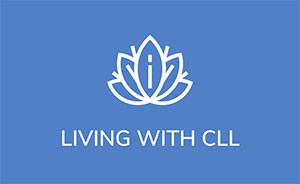Authored by Brian Koffman, (MDCM )retired, MSEd
Bottom Line:
People with CLL benefit from exercise, likely improving quality of life, yet they are rarely “prescribed” it and are less active than their peers. The bidirectional relationship between fatigue and physical activity complicates the analysis.
Who Performed the Research and Where Was it Presented:
Physical Activity, Symptoms, Quality of Life and Exercise Program Preferences in People With Chronic Lymphocytic Leukaemia was published in June 2025 in eJHaem, the journal of the British Society for Haematology, by Ellie E. Miles and others with the help of CLL Support Association, a UK-based organization. patient-led charity that supports people with chronic lymphocytic leukemia (CLL) and small lymphocytic leukaemia (SLL).
Background:
CLL is a lifelong condition that varies widely in its impact on patients. Many experience symptoms and intermittent treatments that negatively impact quality of life (QoL). Physical activity may help manage these symptoms, yet individuals with CLL often remain less active than their peers, even when compared to other cancer patients with solid tumors. Factors driving this inactivity are not well researched. This study examines how disease stage, symptoms, and QoL relate to physical activity levels, and explores patients’ preferences for exercise programs tailored to their needs.
Methods and Study Population:
One hundred and twenty-eight people with confirmed CLL / SLL completed the 183-part online questionnaire distributed by the CLL Support Association.
- There were 66 males and 62 females
- Mean age was 67 ± 9.1 years (range 38–91 years).
- Treatment naïve made up 57% or 73, with the other 43% or 55 having received treatment.
Results:
- Not surprisingly, those treated for CLL (n = 55) had significantly worse quality of life (QoL) and lower engagement in moderate-to-vigorous physical activity compared with those who were treatment-naïve.
- Like other studies, fatigue (77%) was by far the most frequent symptom. Insomnia at (55%) was the most frequently reported symptom, and both were associated with reduced physical activity.
- Only about a quarter of those surveyed met the recommended weekly guidelines for exercise (>150 min moderate activity or >75 min vigorous activity) despite about 70% self‐reporting physical activity at moderate to hard intensities.
- Physically active participants reported significantly better global health.
- Active individuals also had less fatigue, less pain (p = 0.017), and fewer symptoms.
- Treatment-naïve participants completed about twice as many minutes of moderate-to-vigorous physical activity weekly compared to treated participants (median 30 min versus 15 min).
- Almost eight out of ten expressed interest in an exercise program tailored to CLL, yet 70% reported they had never received any physical activity guidance from healthcare.
- Preferred program delivery methods included local community clinics or virtual sessions, supervised by exercise physiologists or physiotherapists (physical therapists), with a program that offered flexible timing, low cost, good parking/transport, and a social component (exercising with other CLL patients).
Conclusions and Recommendations:
While causality cannot be confirmed due to the study’s design (it cannot say if it’s the increased fatigue that leads to decreased exercise or vice versa), the consistent associations between higher physical activity and significantly better QoL and fewer symptoms strongly suggest that increasing exercise may benefit individuals with CLL /SLL.
These findings do highlight a need for CLL-specific exercise interventions to improve QoL, but personalized guidance is lacking for most patients.
Top of FormWe recommend patients take the lead with their healthcare providers by:
- Starting conversations and asking for recommendations for exercise.
- Requesting referral to a physical therapist or exercise physiologist familiar with the special needs of CLL / SLL patients.
- With the doctor’s okay, initiate appropriate physical activity as part of their supportive care, particularly interventions that are individually tailored, supervised as needed, and account for fatigue, treatment status, and mobility.
Bottom of Form
Source:
The publication is freely accessible at Physical Activity, Symptoms, Quality of Life and Exercise Program Preferences in People With Chronic Lymphocytic Leukaemia. There you will find many more details on symptoms and the link between exercise and physical activity.

